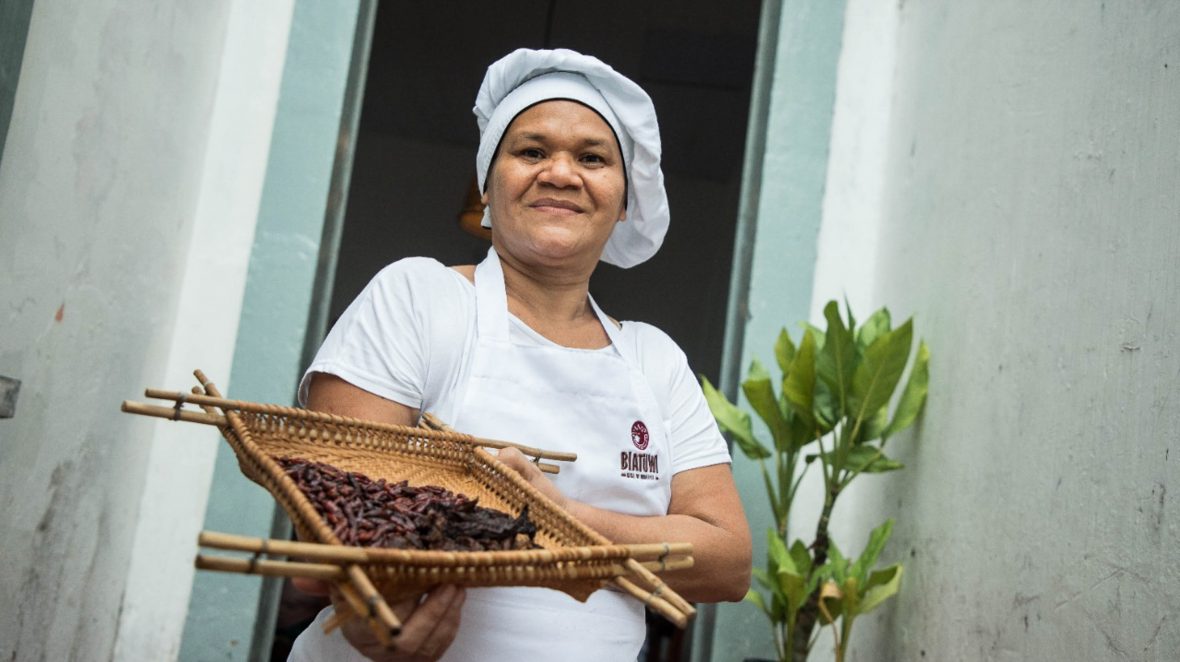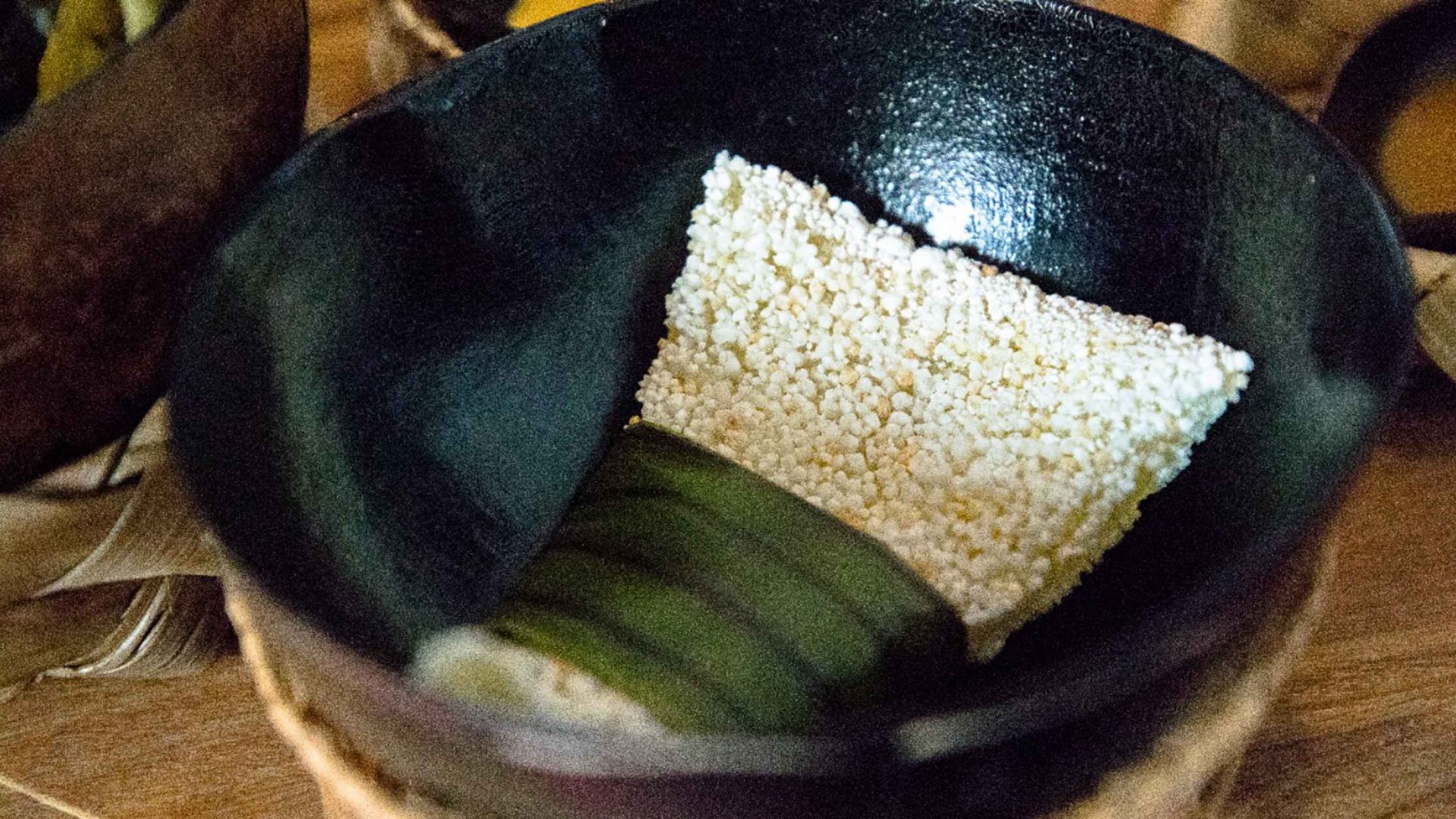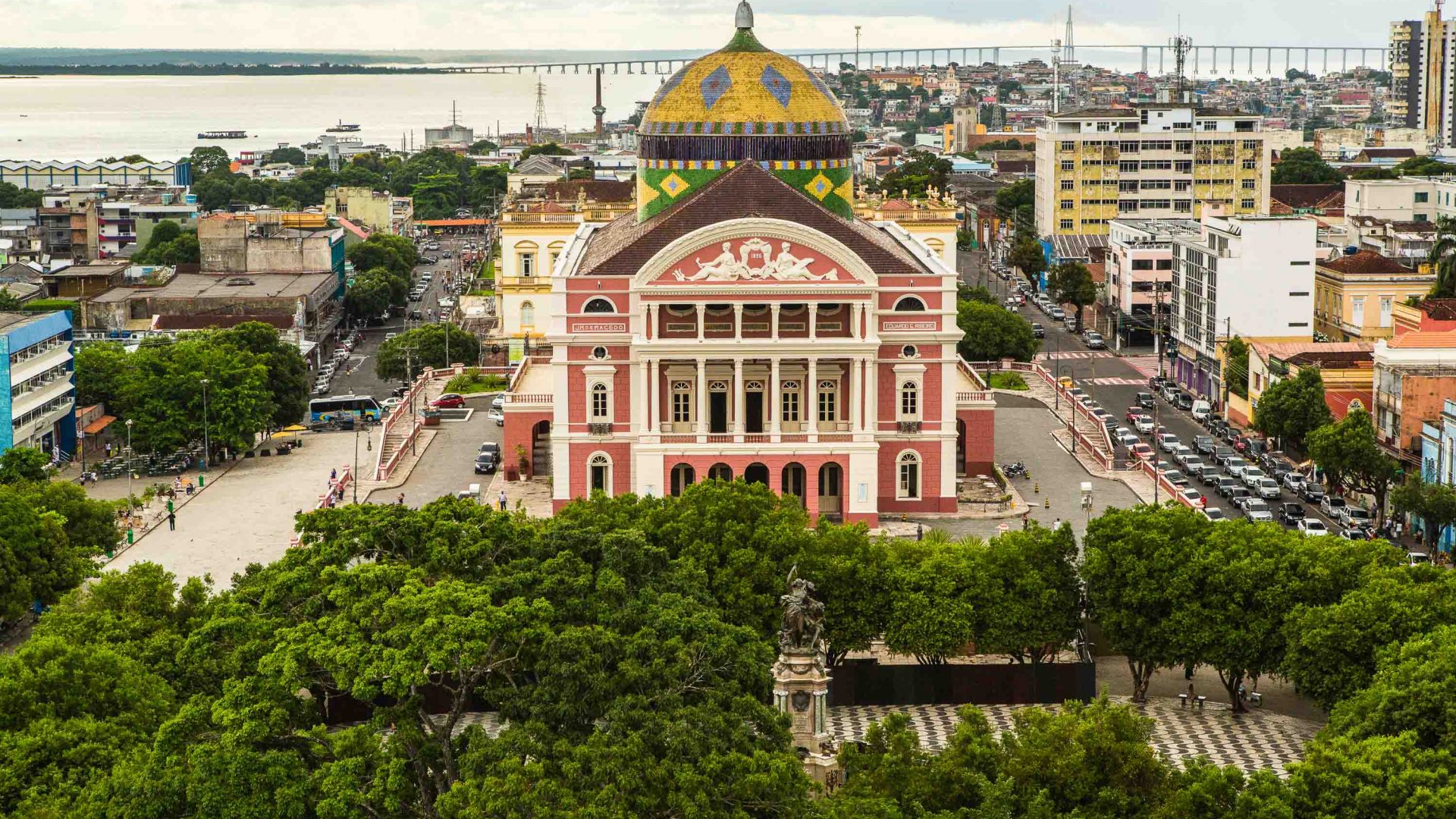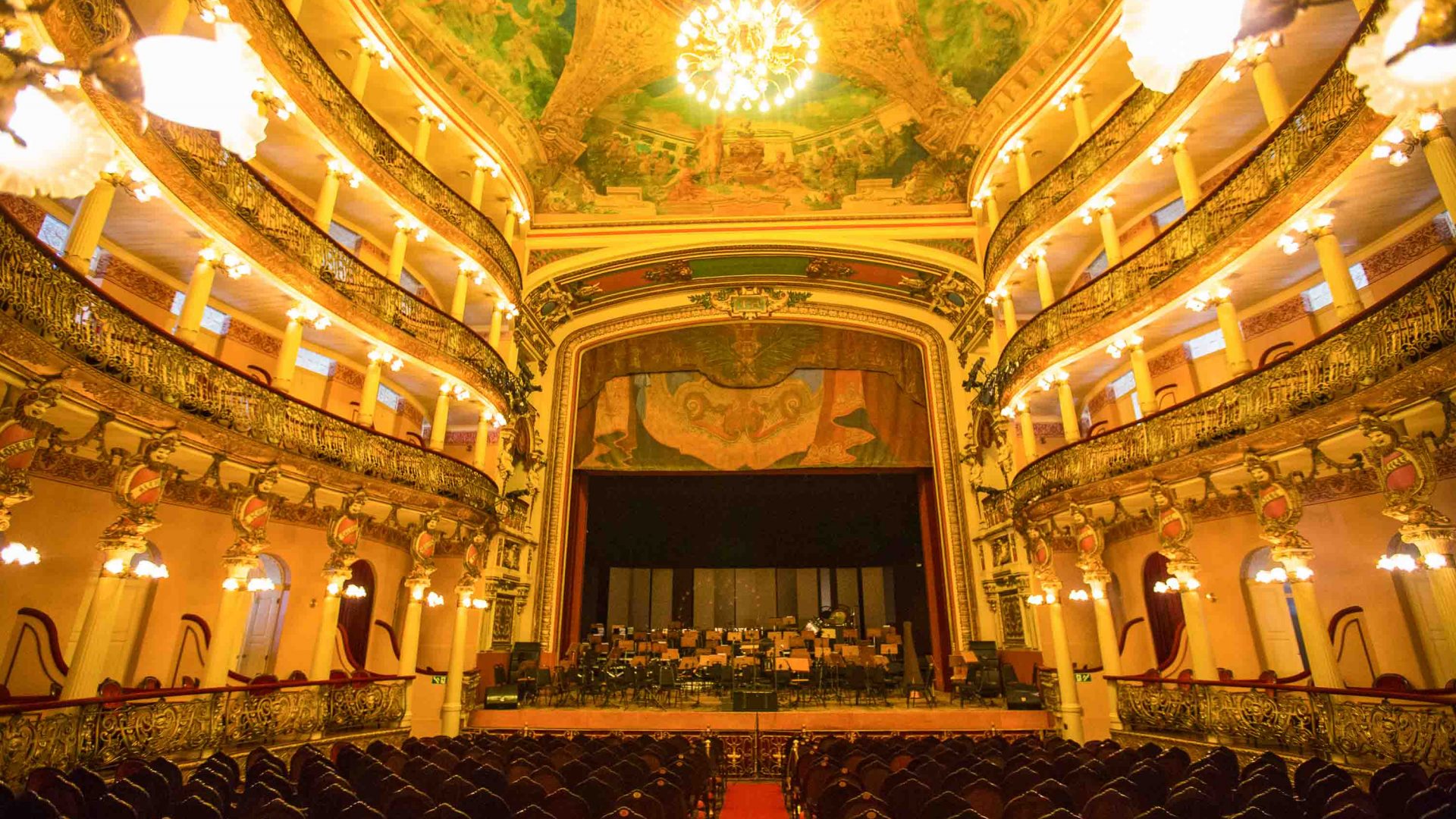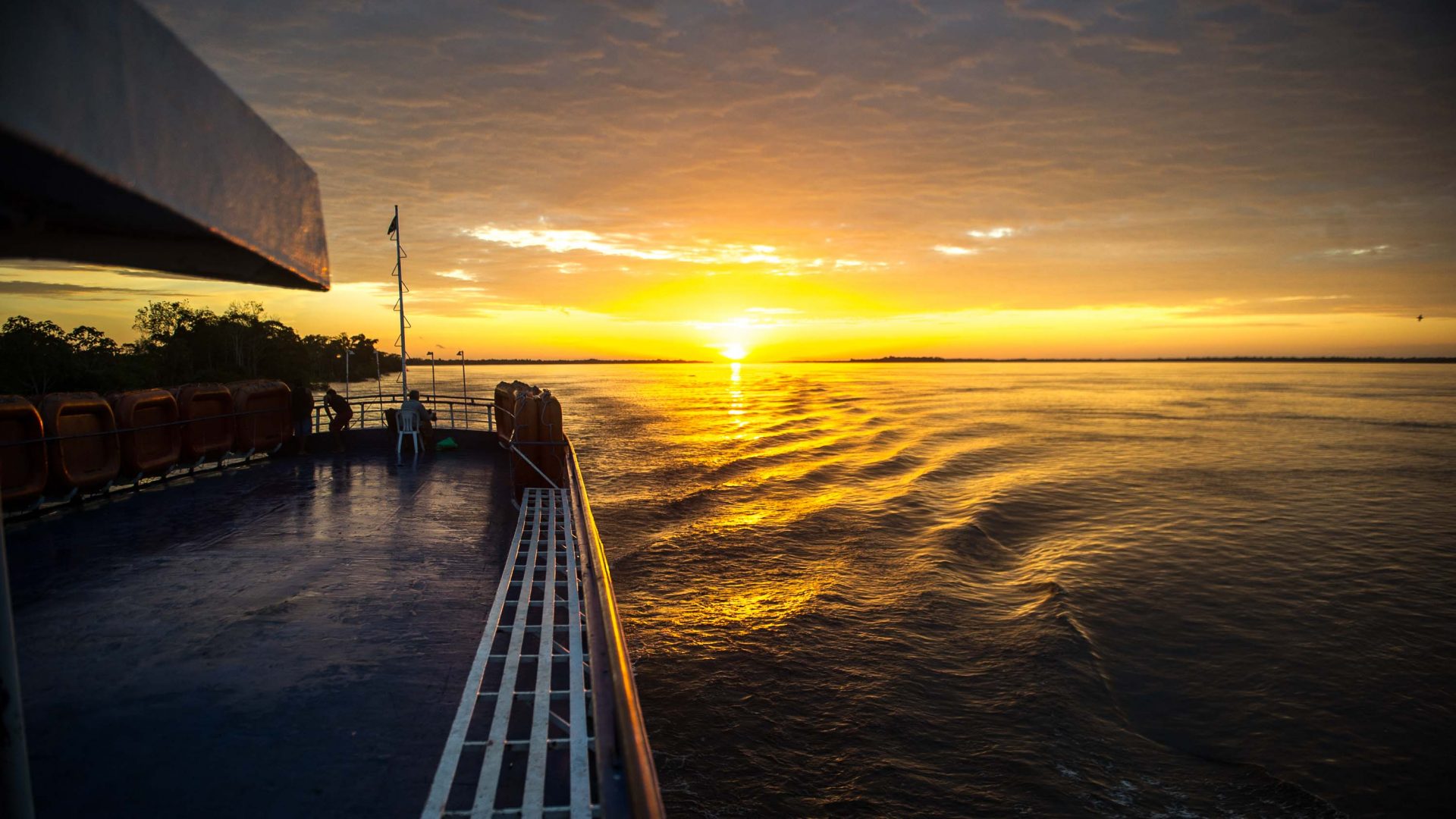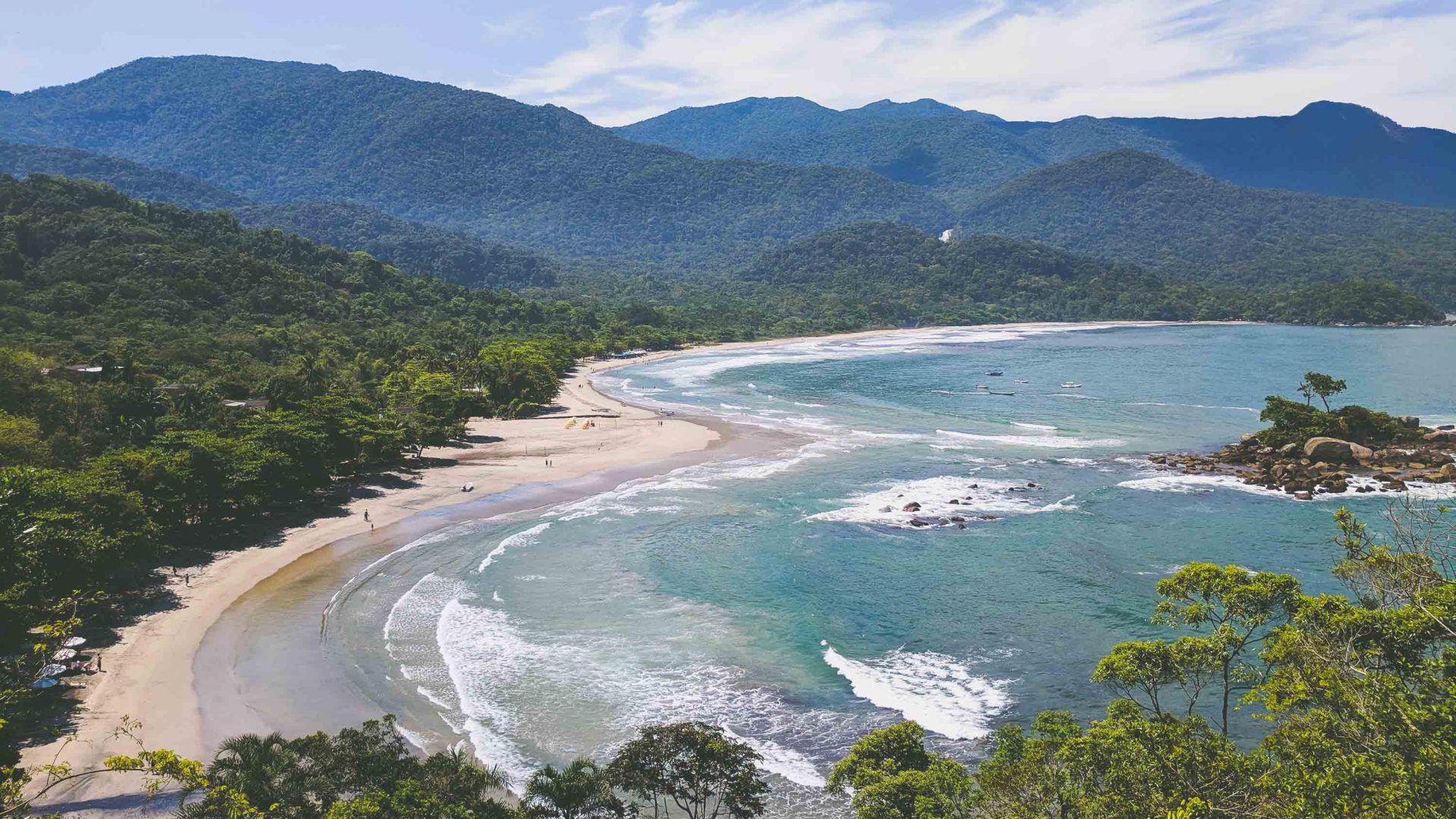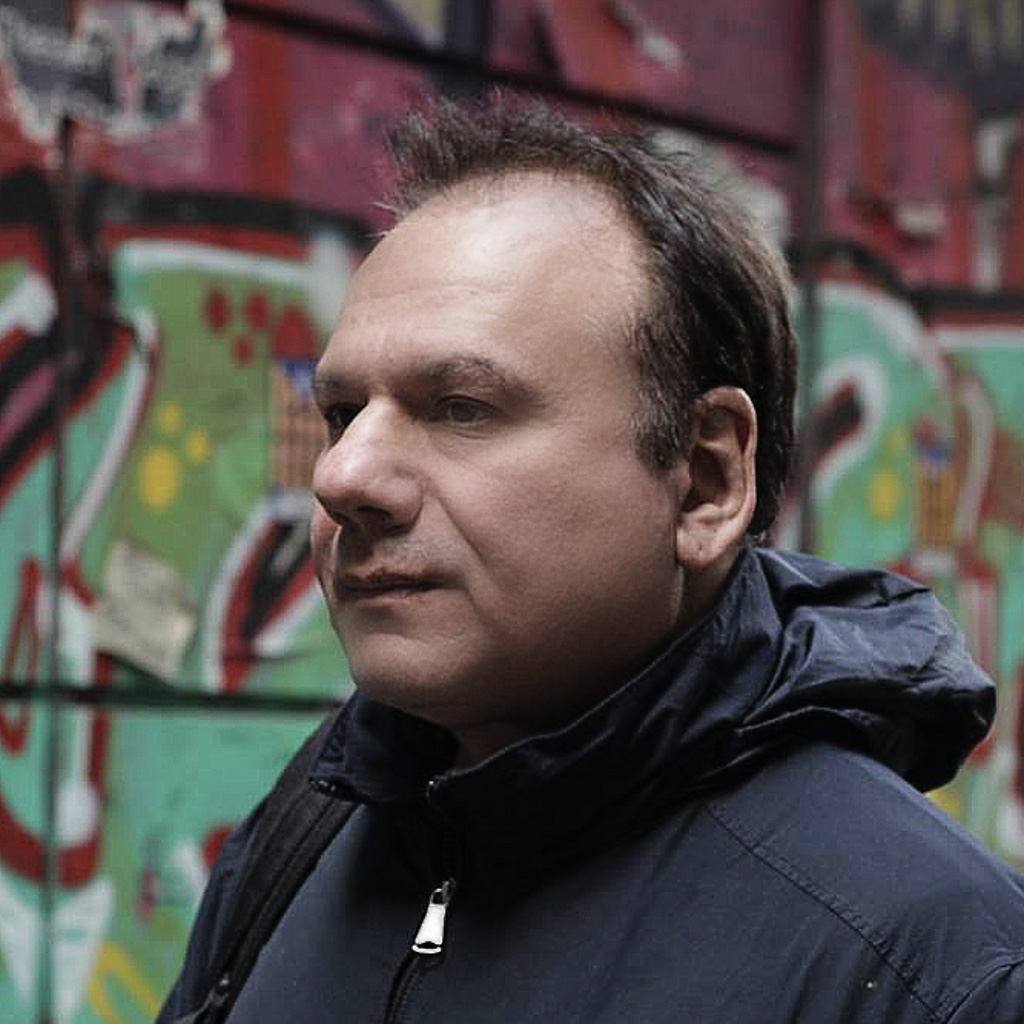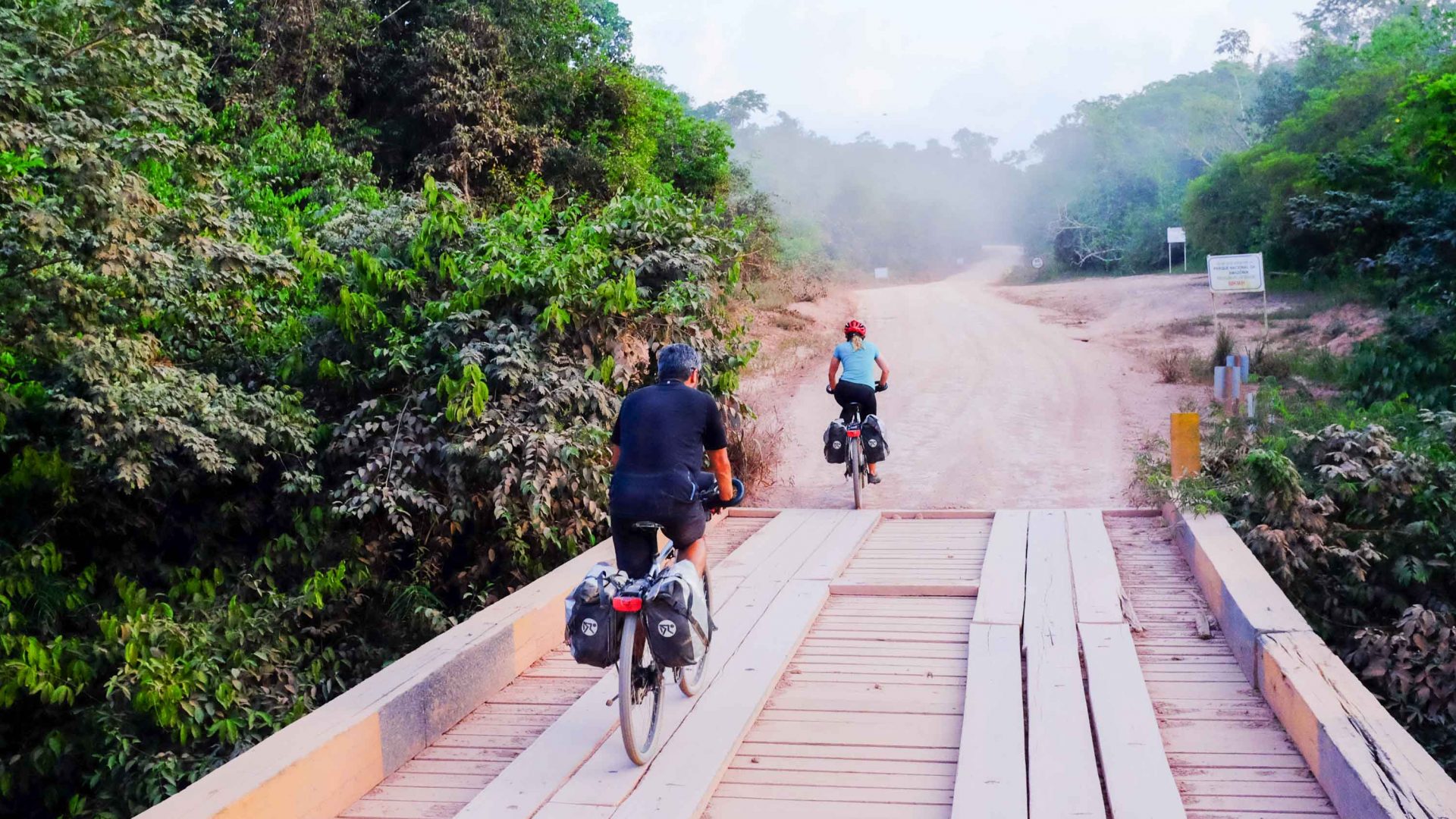My final stop, as the sun heads down, is the famous Amazonas Theater, an opera house that stands as a symbol of opulent excess from the city’s rubber boom. Imposing and ostentatious, it was built with Italian marble, English bricks and French crystal chandeliers in the 19th century, as the city competed to be a tropical Paris. Back then, the Brazilian Amazon supplied nearly all of the world’s rubber.
The rubber barons grew rich on the labor and sweat of seringueiros (rubber tappers), mainly migrants from northeastern Brazil. The Museu do Seringal, a short boat ride away, delves further into this history. But the story of the enslaving of Indigenous people to fuel the rubber trade isn’t told, not so far as I can hear, at least. A 2020 Brazilian documentary describes a British diplomat’s account of the violence he witnessed against Indigenous communities during the rubber boom, most notably how 30,000 Indigenous people were killed to produce 4,000 tonnes of rubber.
By the 1920s, the boom turned to bust when Asian rubber broke the Brazilian monopoly and Manaus fell into decline. It has since restyled itself as a manufacturing hub with a free-trade zone and another boom cycle began. But all the while, Indigenous culture remained buried, invisible or silent to many who visited. If the people I’ve met have anything to do with it, that won’t be the case for too much longer.



